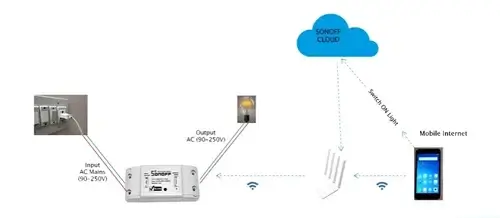The Rise of Ambient IoT: When Technology Fades Into the Background
Picture this: you walk into a room, and before you even touch a button, the lights adjust, the temperature feels just right, and the air purifier hums softly to life. You didn’t command anything. It just happened.
That’s the world of Ambient IoT — a new wave of technology where connectivity quietly works in the background, creating smarter, more intuitive spaces that feel almost alive.
What Exactly Is Ambient IoT?
Ambient IoT is about turning ordinary environments into smart, responsive ones. Instead of relying on visible devices like smart speakers or thermostats, it embeds tiny sensors into everyday objects and surroundings.
These sensors constantly collect and share information — about movement, temperature, sound, or even air quality — and then systems respond automatically. You don’t have to ask your home to warm up or your office lights to dim. It just knows.
It’s a big shift from the typical “device-centered” Internet of Things. Ambient IoT focuses on creating environments that adapt naturally to human presence and behavior.
Why It Matters
So why does this matter? Because as connected devices become more common, managing them all can start to feel overwhelming. Ambient IoT aims to make technology fade into the background — less about tapping and controlling, more about effortless adaptation.
- Seamless experience: No juggling between apps or remotes. Your environment reacts to you.
- Efficiency: Systems like lighting and air conditioning only work when needed, saving energy.
- Comfort: Spaces adapt to your preferences without you even thinking about it.
- Innovation potential: It opens the door for industries like healthcare, retail, and logistics to design truly responsive systems.
Real-World Examples
Ambient IoT is already starting to show up in some clever ways:
- Smart Buildings: Offices that automatically adjust lighting, air conditioning, and even desk height based on occupancy and comfort levels.
- Retail Spaces: Sensors track customer movement and product interaction, helping stores design better layouts and display products people actually engage with.
- Healthcare: Hospital rooms that monitor temperature, humidity, and air quality, ensuring patients stay comfortable and safe without manual adjustments.
- Supply Chains: Some major retailers are experimenting with battery-free “ambient tags” that transmit data about goods as they move through warehouses and stores.
Designing for the Ambient Future
Building Ambient IoT systems takes more than just connecting sensors. The design philosophy changes too. Engineers and designers must think about:
- Low power consumption: Many ambient sensors use energy harvesting to power themselves since they’re meant to last for years.
- Subtle integration: The best Ambient IoT setups don’t look like tech. They blend seamlessly into surroundings.
- Smart data handling: With so much data being collected, systems must filter and process information efficiently to avoid overload.
- Privacy and security: Because sensors work silently, it’s important that users understand what’s being collected and how it’s used.
- Scalability: As environments grow, so must the network — from a single room to an entire smart city.
The Challenges
Like any emerging technology, Ambient IoT isn’t without challenges.
- Too much data: The sheer amount of information collected can be hard to manage.
- Privacy concerns: Invisible sensors make some people uneasy. Transparency and consent are crucial.
- Maintenance: Hidden sensors are tricky to replace or repair if they stop working.
- Standardization: With so many different devices, communication protocols need to align for everything to work smoothly.
Still, these challenges are exactly what makes the field so interesting. It’s an opportunity for innovators to create thoughtful, human-centered designs that make life easier, not more complicated.
The Road Ahead
In the next few years, we’ll see Ambient IoT move from concept to reality. Imagine public spaces that adjust air quality automatically on polluted days, or homes that sense your mood from environmental cues and adapt lighting accordingly.
It’s not about making life futuristic — it’s about making it feel natural.
The ultimate goal of Ambient IoT is to create spaces that understand us without demanding our attention. When done right, technology becomes almost invisible, letting people focus on what actually matters.




